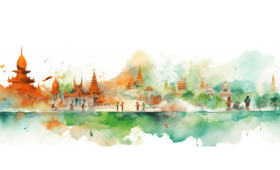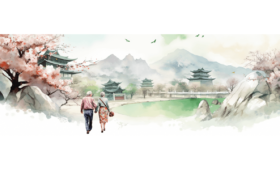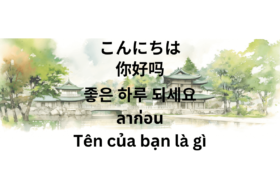With its diverse landscapes and cultures, Asia offers many outdoor family activities that cater to every family’s adventurous spirit. From the adrenaline-pumping zip lines in Thailand’s rainforests to the tranquil cherry blossom viewing in Japan, there’s something for everyone. Whether you’re trekking the Great Wall of China, snorkeling in the vibrant waters of Bali, or engaging in conservation with coral planting in the Maldives, these experiences promise fun, excitement, and opportunities for families to bond and create lifelong memories. The continent’s vast array of climates and topographies ensures that outdoor enthusiasts can find educational and exhilarating pursuits, making Asia an ideal playground for family adventures.
Great Wall of China Trekking – China
Trekking the Great Wall of China is an immersive, outdoor family activity. It is suitable for all ages through time, offering a perfect blend of history, culture, and physical activity. Walking along the Great Wall allows families to touch history, as many sections date back to the Ming dynasty. It’s an educational adventure where tales of ancient battles and emperors come alive against a backdrop of some of the most scenic vistas in China.
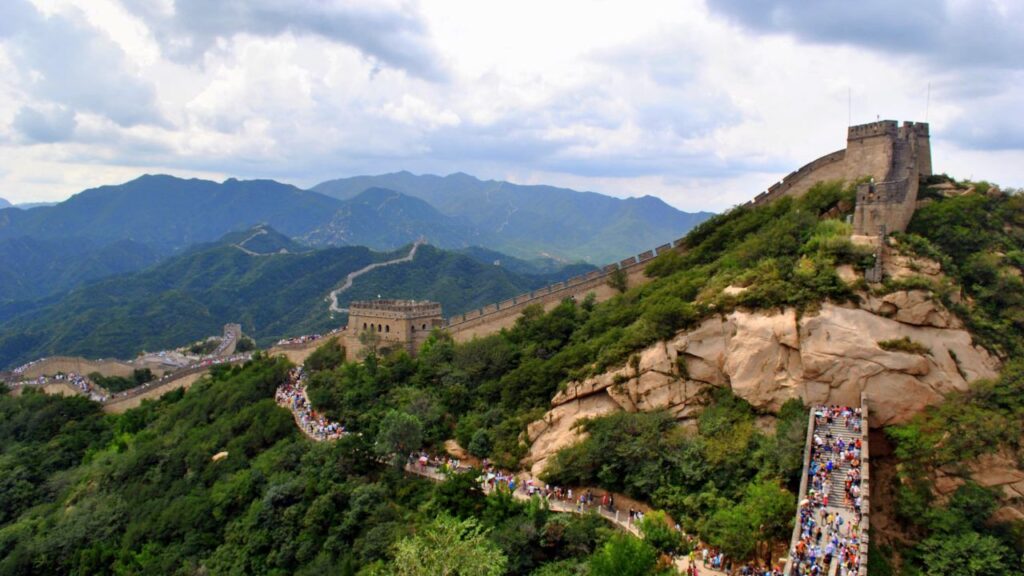
Historical Exploration for All Ages
The wall stretches over 13,000 miles, but sections like Mutianyu and Badaling are restored and most friendly for a family outing. These parts have guardrails and steps, making it safer for children and elders. As you walk, you’ll find watchtowers and parapets where archers once stood guard, sparking the imagination of young explorers and history buffs alike.
Scenic Views and Physical Activity
The trek is also a hiker’s delight, offering varying difficulty levels that can challenge seasoned walkers while still providing manageable paths for the younger or less experienced. Every step rewards you with breathtaking views of rugged mountains, lush forests, and snaking walls that dip and rise with the terrain—an unforgettable canvas for family photos.
Essential Travel Tips for Trekking on the Great Wall of China
- Best Time to Visit: Spring (April-May) and Autumn (September-October) are ideal, with pleasant weather and smaller crowds.
- Preparation: Wear comfortable, sturdy footwear and dress in layers. The weather can change quickly along the Wall.
- Safety: Keep young children close; some sections have steep steps and uneven surfaces.
- Hydration: Bring plenty of water and snacks, as limited vendors are along the Wall.
- Guided Tours: Consider a guided tour for educational insights and historical context, making the experience richer for adults and children.
- Accessibility: If traveling with toddlers or those with limited mobility, the cable cars at certain sections can help bypass more challenging climbs.
- Respect the Environment: Teach children the importance of preserving the site by not littering and staying on marked paths.
Remember, the Great Wall is vast, and every section tells a different story. Some areas are less. Renovated and more challenging to navigate, offering a more authentic experience but requiring better physical condition. Always plan according to your family’s abilities and interests.
The second on the of Outdoor Family Activities is Bamboo Rafting on the Yulong River – in China
Gliding along the Yulong River on a bamboo raft offers a serene and picturesque journey through the heart of China’s Guangxi province. This tranquil experience suits families seeking a gentle adventure combining relaxation and cultural immersion.

Gentle Rafting Suitable for Families
The calm waters of the Yulong make bamboo rafting an ideal activity for families, including those with young children or older relatives. Each traditional raft, steered by a local guide using a long pole, carries up to four people. The steady pace allows you to soak in the lush landscapes of the Yulong River Valley without the intensity of white-water rafting.
As you meander down the river, you’ll pass by ancient bridges, verdant rice paddies, and limestone karst mountains — hallmarks of the region’s natural beauty. Rafting offers a unique vantage point to observe local life along the riverbanks, including farmers tending to their fields and fishermen at work. It provides a glimpse into the day-to-day activities that have shaped the region’s culture.
Essential Travel Tips for Bamboo Rafting
- Best Time to Visit: The ideal months for bamboo rafting are from April to October when the weather is warm and the landscapes are most vibrant.
- Safety First: Life jackets are provided and should be worn at all times, especially by children, regardless of the calm conditions.
- Sun Protection: Apply sunscreen and wear hats or bring an umbrella for shade, as the open rafts offer little protection from the sun.
- Stay Hydrated: Bring water and perhaps some light snacks, especially if traveling with kids.
- Capture the Moment: Don’t forget your camera, but protect it from water — although the ride is smooth, splashes can happen.
- Respectful Tourism: Encourage children to respect the natural environment and the local way of life witnessed along the river.
- Plan Your Route: Discuss the length of the trip with the raft operator. Shorter and longer options are available, so choose one that suits your family’s comfort level and schedule.
Remember, bamboo rafting on the Yulong River isn’t just about the activity itself; it’s about the opportunity to connect with nature and culture in one of China’s most scenic regions. The right preparation will ensure a memorable and comfortable experience for the entire family.
Cherry Blossom Viewing in Kyoto – Japan
Kyoto, the imperial capital of Japan, is renowned for its exquisite cherry blossom, or sakura, season. Families flock to this city to partake in hanami, the traditional custom of enjoying the transient beauty of flowers amidst landscapes as culturally rich as beautiful.
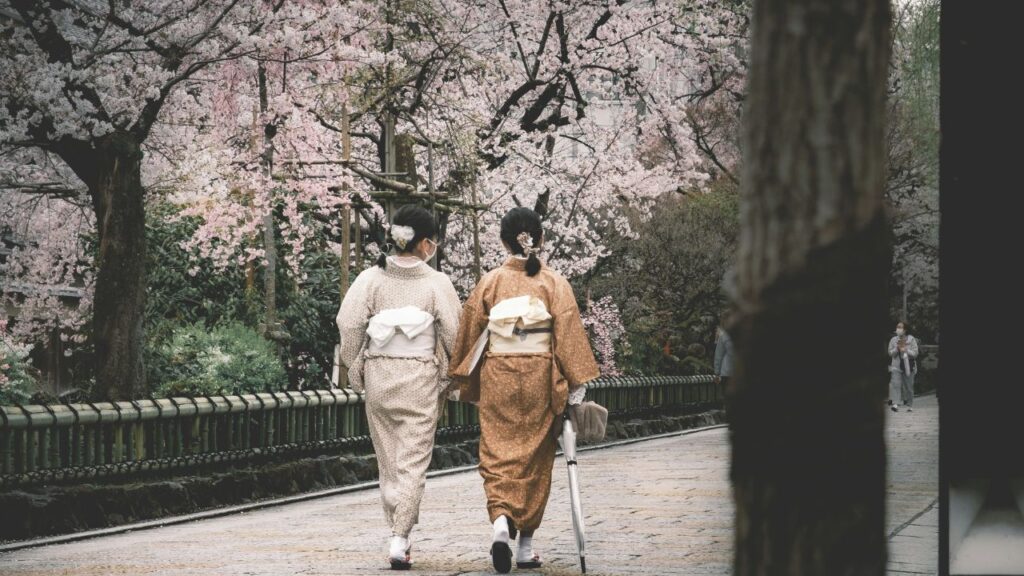
Seasonal Beauty in Family-Friendly Parks
During cherry blossom season, Kyoto’s parks, temples, and shrines become canvases of pink and white blooms. Maruyama Park and the Philosopher’s Path are perfect for a family stroll under the sakura-lined pathways. The city’s family-friendly parks offer wide open spaces for children to play and for family picnics under the blossoming trees.
Cultural Significance and Festivities
The cherry blossom season is a feast for the eyes and a time of cultural events. Many sites host festivals with traditional music, dance, and food stalls serving seasonal delicacies. Participating in these festivities can give families a deeper appreciation for the cultural significance of sakura as a symbol of life’s beauty and fragility.
Essential Travel Tips for Cherry Blossom Viewing
- Best Time to Go: The Sakura season can vary yearly, but it typically peaks in Kyoto from late March to mid-April. Keep an eye on the cherry blossom forecasts to plan your visit.
- Crowds: Popular spots can get crowded, so consider visiting early in the morning to enjoy a quieter experience.
- Allergy Precautions: If anyone in the family has allergies, come prepared with any necessary medication, as the pollen can be plentiful.
- Dress Appropriately: Spring weather can be unpredictable, with warm days and chilly evenings, so dress in layers.
- Respect Nature: Teach children not to pick the blossoms or branches. Preserving the natural beauty is paramount.
- Photography: Charge your camera and be ready for lots of photos, but also take time to put technology aside and enjoy the moment.
- Transportation: Public transportation is typically the best way to get around, but be prepared for busier-than-usual services.
Experiencing cherry blossom season in Kyoto is a wonderful way for families to engage with Japanese culture and enjoy one of nature’s most spectacular displays. With a bit of planning, it can be a peaceful, enchanting experience that the whole family will remember for years to come.
Nami Island Exploration – South Korea
Nami Island, or Namiseom, is a picturesque half-moon-shaped isle in Chuncheon, South Korea. It is celebrated for its natural beauty and tranquil atmosphere, making it an idyllic retreat for families seeking a serene getaway from the hustle and bustle of the city.

Scenic Beauty and Family Picnic Spots
Fringed by towering trees, including the iconic Metasequoia-lined roads, Nami Island offers an abundance of scenic spots perfect for a family picnic. The grassy fields and riverside views provide a stunning backdrop for a leisurely day out. In every season, the island has its own charm, be it the vibrant green of summer, the fiery hues of autumn, the snow-dusted landscape of winter, or the fresh blooms of spring.
Renting a bicycle is a popular way to explore the island, with tandem bikes available for those with young children. The flat terrain and well-maintained paths make cycling an enjoyable activity for all family members. Alternatively, leisurely walks along the tree-lined pathways offer a more relaxed pace to take in the sights, including the various sculptures and artworks dotted throughout the island.
Essential Travel Tips
- Getting There: The most enchanting way to arrive is by ferry, offering picturesque views as you approach the island.
- Pack for the Day: While there are restaurants and cafes, bringing a picnic allows for a spontaneous meal anywhere that catches your fancy.
- Dress Comfortably: Wear comfortable shoes suitable for walking or cycling and dress in layers to adapt to changing weather conditions.
- Plan for Activities: Besides cycling and picnicking, Nami Island offers diverse attractions, from ziplining to cultural experiences. Check the schedule in advance.
- Child-Friendly Facilities: The island has amenities like children’s play areas, making it convenient for those with little ones.
- Photography: Charge your camera; Nami Island’s photogenic landscapes are a treasure trove for family pictures.
- Respect the Environment: Keep the island beautiful by disposing of waste properly and staying on designated paths.
- Best Time to Visit: Each season offers a different experience. Autumn brings a spectacular display of colors, making it a particularly popular time to visit.
Visiting Nami Island is about more than just sightseeing; it’s about engaging with nature, bonding with family, and creating lasting memories in one of South Korea’s most cherished natural environments.
Elephant Nature Park Visit – Thailand
Elephant Nature Park in Chiang Mai, Thailand, is one of the most fantastic outdoor family activities. It is an elephant sanctuary and rescue center. This ethical wildlife haven provides a safe environment for visitors to observe and interact with elephants without compromising the well-being of these majestic creatures.
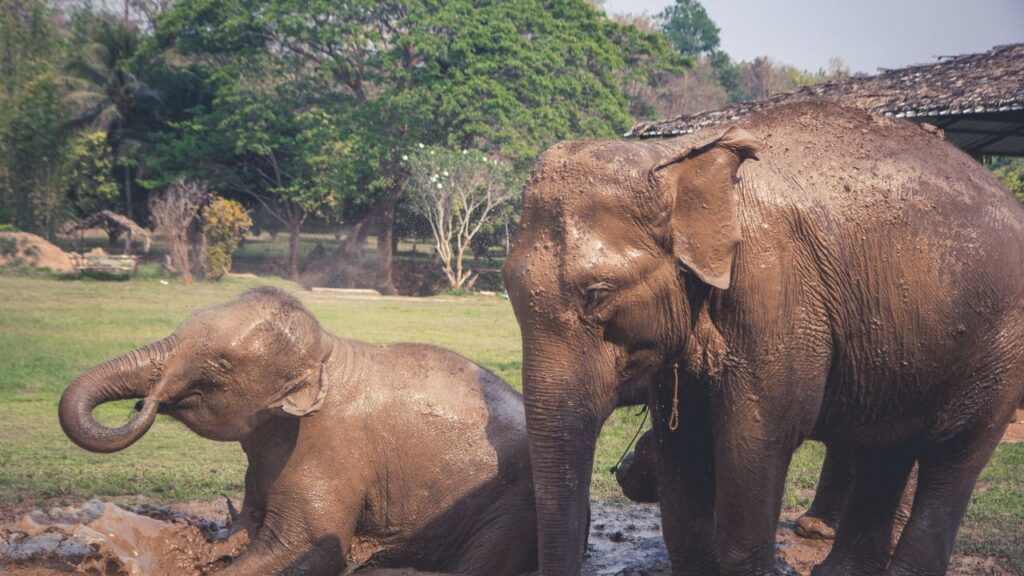
Ethical Wildlife Interactions
Unlike traditional tourist attractions that may offer elephant rides or shows, Elephant Nature Park focuses on the ethical treatment of its animals. Visitors can watch elephants roam freely, bathe in natural rivers, and socialize with each other in a natural setting. This responsible approach to wildlife tourism supports conservation and allows for up-close interactions that are respectful to the elephants.
Educational Experience for Children
A visit to the Elephant Nature Park is not only enjoyable but also serves as an invaluable educational experience for children. The park provides an opportunity to learn about the complex social structure of elephant herds, the issues surrounding elephant conservation, and the impact of human activities on these animals’ natural habitats and well-being.
Essential Travel Tips for Visiting Elephant Nature Park
- Advance Booking: Due to the popularity of the park and its commitment to not overcrowding, booking your visit in advance is essential.
- Prepare for the Outdoors: Wear comfortable clothing and shoes suitable for walking on uneven terrain, and bring hats and sunscreen to protect against the sun.
- Health and Safety: Use insect repellent to ward off mosquitoes and other insects common in rural areas.
- Stay Hydrated: Bring water bottles, as the heat can be intense, especially for younger visitors.
- Respect the Animals: Teach children to respect the elephants’ space and follow all guidelines provided by the sanctuary staff.
- Photography: Cameras are encouraged to capture the memories, but flash should be disabled to avoid startling the animals.
- Meal Options: The park typically provides a vegetarian buffet lunch; check ahead for any dietary restrictions your family might have.
- Best Time to Visit: The park is open year-round, but the cool season from November to February offers the most comfortable climate for outdoor family activities.
Visiting the Elephant Nature Park is a heartwarming, educational, and unique experience that allows families to witness the beauty of elephants in a respectful environment. It’s an excursion that contributes to the animals’ welfare and leaves a lasting impression on all who walk through its paths.
Snorkeling in Bali – Indonesia
Bali, Indonesia, is renowned for its vibrant marine life and clear waters, making it an exceptional destination for snorkeling enthusiasts of all ages and skill levels. The island’s gentle seas provide the perfect conditions for families looking to introduce their children to the wonders of the underwater world.
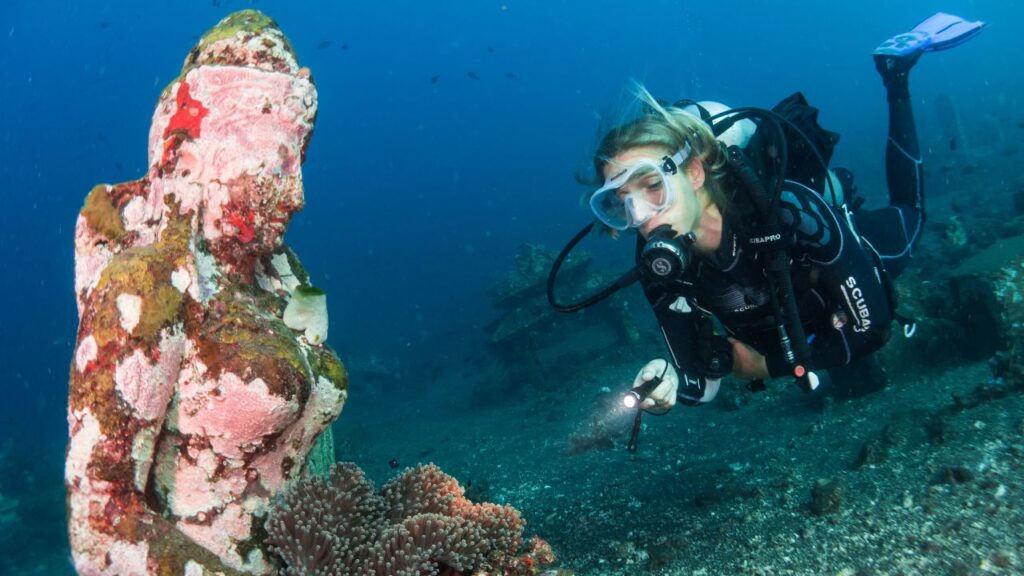
Safe and Shallow Waters for Young Children
Bali’s sheltered bays and beaches often have shallow waters ideal for children. These areas allow young snorkelers to stay close to the shore while experiencing the thrill of spotting clownfish, starfish, and even the occasional sea turtle. The reassuring proximity of the beach makes for a stress-free introduction to marine exploration for both kids and their parents.
Essential Travel Tips for Snorkeling in Bali
- Check Weather and Water Conditions: Always ensure the sea conditions are calm and suitable for children, with no strong currents.
- Safety Equipment: Use life jackets for children and those not confident in their swimming abilities. Ensure snorkeling gear fits well to prevent water leakage and discomfort.
- Sun Protection: The sun can be intense, even on cloudy days, so apply waterproof sunscreen liberally and consider wearing rash guards or UV-protective swimwear.
- Hydration and Snacks: Bring plenty of water and snacks, as snorkeling can be surprisingly tiring, especially for young ones.
- Supervision: Always keep a watchful eye on children, regardless of water depth, and never allow them to snorkel alone.
- Marine Conservation: Teach children not to touch or step on the coral and to avoid disturbing marine life, maintaining a safe distance at all times.
- Local Guides: Consider hiring a local guide who can provide valuable insights about the best spots for families and assist with any unexpected challenges.
- Best Time to Snorkel: The dry season from April to September generally offers the best conditions for snorkeling in Bali, with more transparent waters and less rainfall.
Snorkeling in Bali is an adventure that combines fun, learning, and the excitement of discovering a new environment. With its friendly beaches and diverse underwater ecosystem, Bali is an ideal spot for family snorkeling escapades.
Biking Around Angkor Wat – Cambodia
Cycling through the ancient temple complex of Angkor Wat provides an immersive way to explore one of Southeast Asia’s most significant archaeological sites. This activity combines physical exercise with a profound educational journey through Cambodia’s rich history.

Combination of Exercise and Historical Education
As families pedal along the paths of Angkor Wat, they not only engage in healthy physical activity but also have the chance to learn about the historical and cultural significance of the temples. Each structure within the complex tells a part of the story of the Khmer Empire, with opportunities to stop and explore intricate bas-reliefs and awe-inspiring architecture that spans centuries.
Routes for Various Fitness Levels
The Angkor Wat complex caters to bikers of all ages and fitness levels. Numerous trails and routes range from flat, easy paths around the main temple to more challenging circuits, including the wider Angkor Archaeological Park. This variety ensures that families can find a comfortable route, allowing for a leisurely ride or a more strenuous adventure, depending on their preference.
Essential Travel Tips for Families
- Bike Rentals: There are many options for bike rentals near Angkor Wat, including mountain bikes and bikes with child seats. Ensure you rent from a reputable provider and check the condition of the bikes before heading out.
- Start Early: The Cambodian heat can be intense, especially at midday, so an early morning start is recommended to enjoy the cooler temperatures and to witness the sunrise.
- Hydration: Carry plenty of water. There are also vendors throughout the complex where you can purchase refreshments.
- Appropriate Attire: Wear comfortable clothing for cycling and modest attire that covers shoulders and knees, as Angkor Wat is a sacred site.
- Temple Etiquette: When exploring the temples, remind children to be respectful, not to climb on fragile structures, and to keep noise levels down.
- Plan Your Route: Choose a route that matches your family’s interests and fitness level beforehand. Don’t try to see everything in one day; pick a few key temples and enjoy them thoroughly.
- Safety Gear: Helmets should always be worn while biking, and knee and elbow pads are recommended for children.
- Guided Tours: For an informative experience, consider hiring a guide who can lead you through the best paths and provide historical context for what you’re seeing.
- Best Times to Visit: The cool season from November to February offers the most comfortable climate for biking around Angkor Wat.
Biking around Angkor Wat offers a dynamic way to explore this UNESCO World Heritage site. It allows families to connect over a shared experience of discovery and learning against Cambodia’s ancient history.
Sandboarding in Mui Ne – Vietnam
Mui Ne, located along the southeast coast of Vietnam, is famous for its towering sand dunes that create a unique desert-like atmosphere in the region. Sandboarding on these dunes offers an exhilarating adventure sport for older children and adults, providing a rush of adrenaline alongside stunning natural scenery.
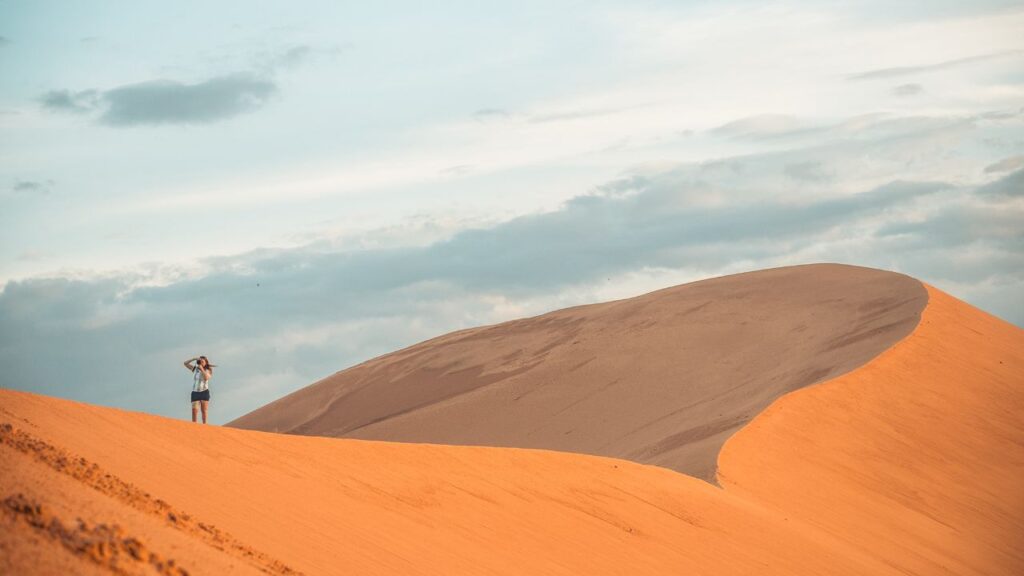
Adventure Sport for Older Children and Adults
Sandboarding is exciting, somewhat akin to snowboarding but on the sand. The dunes of Mui Ne offer the perfect terrain for this sport, with slopes that cater to various skill levels. Older children and adults will find the thrill of gliding down the sandy slopes unforgettable. It’s a great way to bond as a family, challenging each other’s balance and speed, and is especially appealing to those with a love for adventure and sports.
Essential Travel Tips for Sandboarding in Mui Ne
- Physical Fitness: Ensure that all participants are physically fit for the activity, as sandboarding can be demanding and involves climbing steep dunes.
- Equipment Rental: Boards can be rented at shops near the dunes, and vendors are typically available on-site to rent out sleds for those who prefer to sit while sliding down.
- Protection from the Sun: The sun can be intense, and there’s little shade in the desert, so wear sunblock, hats, and sunglasses.
- Hydration: Bring enough water to stay hydrated throughout the adventure.
- Instructor Assistance: For beginners, seeking guidance from instructors can help learn the basics of sandboarding.
- Clothing: Wear light, comfortable clothing, but expect to get sandy. Closed-toed shoes are recommended over sandals to protect your feet from the hot sand.
- Camera: Don’t forget a camera or phone to capture the spectacular views and action shots, but protect your equipment from the sand.
- Safety: Always follow safety instructions, watch out for other sandboarders, and be mindful of the steepness of the dunes to prevent injuries.
- Best Time to Go: The dunes are less crowded during weekdays. Visiting early in the morning or later in the day also avoids the heat and provides the best lighting for photos.
- Respect the Environment: Take all trash with you and avoid any activities that may damage the dunes or the local ecosystem.
Sandboarding in Mui Ne is a unique way to experience the thrill of a desert adventure and is a testament to Vietnam’s diverse landscapes. It’s an activity that provides a physical challenge and an opportunity to make lasting memories in one of the country’s most remarkable settings.
Safari in Yala National Park – Sri Lanka
Yala National Park in Sri Lanka is a prime wildlife destination that offers families an unforgettable safari experience. Known for its biodiversity, Yala is home to many animals, including the elusive Sri Lankan leopard. The park provides a safe environment for wildlife viewing and is an educational gold mine for those interested in native species.
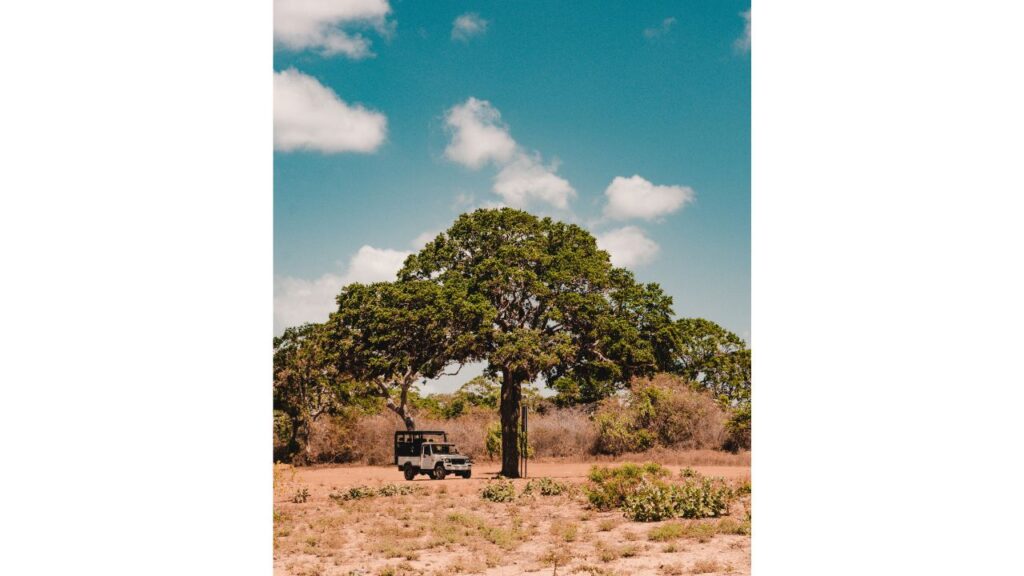
Opportunities to Learn About Native Species
A safari in Yala is not just about the excitement of animal sightings; it’s also an educational journey. Guides share their knowledge about the behaviors and habitats of the native species, which might include elephants, sloth bears, crocodiles, various species of deer, and a plethora of birdlife. This interaction provides a deeper understanding and appreciation of these creatures and the importance of conservation efforts.
Travel Tips for Families
- Book in Advance: Safaris can fill up quickly, especially during peak tourist seasons, so booking your tour in advance is wise.
- Choose the Right Time: The best times for wildlife viewing are early morning and late afternoon when animals are most active.
- Prepare for the Jeep Ride: Safaris can be bumpy and dusty. Wear comfortable clothing and consider bringing bandanas or masks to cover your mouth and nose.
- Sun Protection: Bring hats, and sunglasses, and sunscreen even if you are inside the jeep, as the sun can be intense.
- Stay Hydrated: Carry water with you, as the safari can last several hours.
- Follow Park Rules: Always stick to the guidelines provided by the park and your guide. Feeding or disturbing the wildlife is prohibited.
- Bring Binoculars and Cameras: Enhance your viewing experience with a good pair of binoculars, and don’t forget your camera with a zoom lens for those close-up shots.
- Educate Your Children: Prepare them beforehand about the importance of being quiet and still during animal sightings to avoid scaring them away.
- Be Patient: Wildlife sightings are not guaranteed; enjoy the experience of being in nature and appreciate any encounters you have.
- Respectful Interaction: Keep noise to a minimum and ensure your presence is as unobtrusive as possible to the natural environment.
- Best Time to Visit: The dry season from February to June is when the water levels are low, making animals more likely to emerge in search of water.
A family safari in Yala National Park is more than just an excursion; it’s an opportunity to connect with nature and foster a sense of respect and wonder for the natural world in the hearts of both young and old.
Silk Road City Tours – Uzbekistan
Embarking on a Silk Road City Tour in Uzbekistan is like stepping back to the days when caravans traversed these lands, carrying silk and spices between Europe and Asia. Uzbekistan’s key cities like Samarkand, Bukhara, and Khiva are treasure troves of history, and walking tours here are a perfect blend of education and exploration, rich with cultural experiences.

Walking Tours through Historical Sites
Walking tours in Uzbekistan’s famed cities offer an intimate look at the intricate Islamic architecture, characterized by majestic mosques, minarets, and madrasahs adorned with turquoise mosaics. A stroll through the winding streets of these ancient cities can transport families to the heyday of the Silk Road. Guides are invaluable, providing historical context to the Registan in Samarkand, the Ark Fortress in Bukhara, or the walled inner city of Ichan Kala in Khiva.
Cultural Experiences in Ancient Cities
These city tours are about admiring the grandeur of historic landmarks and immersing oneself in the local culture. Families can experience traditional crafts in local bazaars, where artisans create everything from hand-woven carpets to intricate metalwork. Culinary tours also offer a taste of Uzbek cuisine, with its unique flavors and cooking methods passed down through generations.
Essential Travel Tips for Families
- Plan Your Visits: Many historical sites have specific opening and closing times, as well as days when they may be closed to visitors. Check ahead to plan your itinerary accordingly.
- Dress Appropriately: Uzbekistan is predominantly Muslim, so dressing modestly is recommended, particularly in religious sites.
- Stay Hydrated: The climate can be dry and hot, especially in the summer, so carry water during your tours.
- Respect Local Customs: Be aware of local customs and traditions, especially when taking photos or interacting with locals.
- Learn Basic Phrases: Knowing simple phrases in Uzbek or Russian can enhance your interaction with locals who appreciate the effort.
- Choose Comfortable Footwear: Since tours involve a significant amount of walking, often on cobblestone streets, comfortable shoes are a must.
- Rest Periods: Incorporate rest periods into your tour schedule, especially if traveling with young children or elderly family members, to avoid fatigue.
- Night Tours: Some cities offer night tours where the monuments are beautifully illuminated, offering a different perspective and cooler temperatures.
- Guidebooks and Maps: Carry a guidebook or map, even if you have a guide, to enhance your understanding of the sites you’re visiting.
- Currency Exchange: Ensure you have enough local currency (Uzbekistani som), as many vendors do not accept credit cards.
- Best Time to Visit: The best times to visit are during spring (April to June) and autumn (September to early November) when the weather is more moderate.
A family tour along the Silk Road cities in Uzbekistan provides an enriching and memorable experience, blending the exploration of historical wonders with firsthand cultural encounters, deepening the understanding and appreciation for this pivotal region in world history.
Hot Air Ballooning in Cappadocia – Turkey
Hot air ballooning over the otherworldly landscapes of Cappadocia is a bucket-list-worthy adventure for families. The region is renowned for its fairy-tale scenery, with unique rock formations, deep valleys, and cave dwellings. Floating serenely above this magical terrain provides a safe and spectacular experience for all ages.
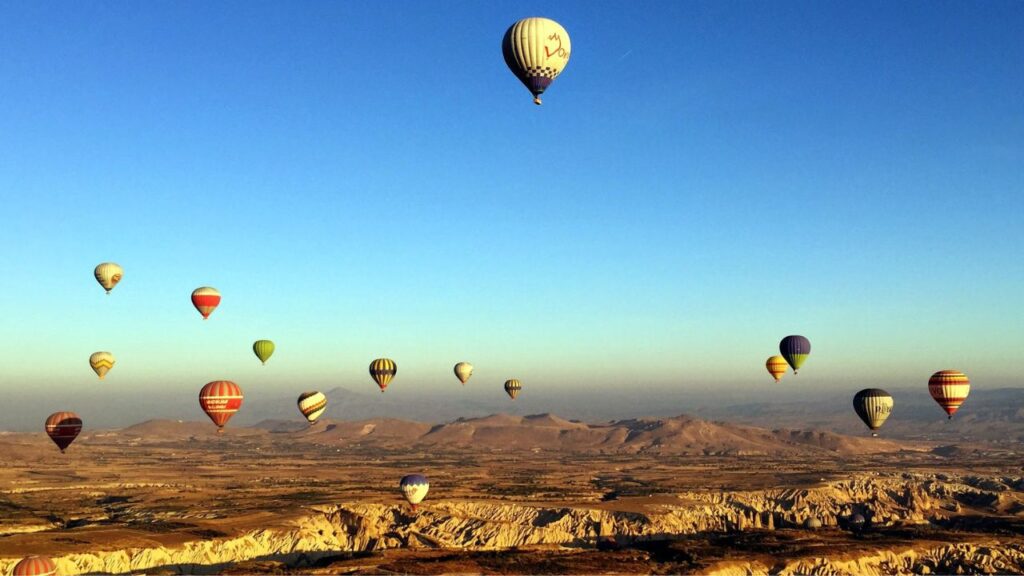
Breathtaking Views for the Whole Family
A hot air balloon ride in Cappadocia offers panoramic views of the region’s distinctive geological formations, including the famous “fairy chimneys.” As you ascend at sunrise, the play of light creates a mosaic of shadows and colors on the landscape below, which is an unforgettable sight. It’s not just the altitude that takes your breath away; it’s also the sheer beauty of the natural and human-made wonders.
Essential Travel Tips for Families
- Booking in Advance: Hot air ballooning is a popular activity in Cappadocia, so book your flight well in advance, especially if you are visiting during peak season.
- Dress in Layers: Mornings can be cool, so dressing in layers is advisable. As the sun rises, you can adjust to maintain comfort.
- Wear Comfortable Shoes: You might be standing for around an hour, and the terrain upon landing can be uneven.
- Height Considerations: Ensure that all family members are comfortable with heights. Children need to be tall enough to see over the basket.
- Listen to the Safety Briefing: Pay close attention to the pilot’s safety instructions before taking off.
- Camera and Binoculars: Don’t forget to bring a camera to capture the stunning vistas. Binoculars can also enhance the experience, allowing you to look closer at distant landmarks.
- Protection from the Sun: The sun can be stronger as you ascend, so sunscreen and a hat are recommended.
- Stay Hydrated: Have some water before you take off, although it’s best to avoid heavy meals.
- Certified Operators: Choose a reputable and accredited ballooning company for the best safety standards.
- Best Time to Fly: April through October offers the most reliable weather for ballooning, with clear skies and favorable winds.
- Celebrate the Experience: Many operators offer a celebratory toast upon landing, often with a certificate to commemorate your flight.
Hot air ballooning in Cappadocia is more than just an activity; it’s an awe-inspiring experience that captures the imagination and creates lasting family memories. It provides a peaceful yet exhilarating way to appreciate the grandeur of one of Turkey’s most iconic landscapes.
Coral Planting in the Maldives
Participating in coral planting in the Maldives is a meaningful way to combine vacation with conservation. The island nation, known for its crystal-clear waters and rich marine biodiversity, has been at the forefront of coral reef restoration efforts. For families, especially those with older children, this activity offers a hands-on approach to learning about and contributing to marine conservation.
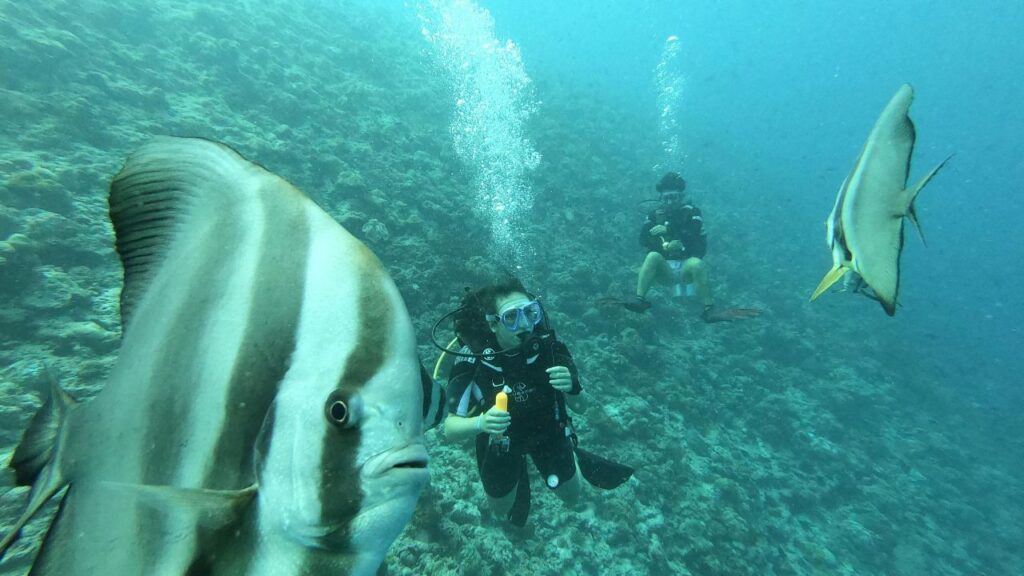
Conservation Activity for Older Children
Coral planting initiatives typically involve attaching coral fragments, known as ‘nubbins,’ onto frames or ‘reef stars,’ which are then placed back into the sea to grow and form new parts of the reef. This activity helps restore damaged coral reefs and allows older children to engage in a real-world conservation project. It’s an empowering and educational activity that imparts the importance of environmental stewardship.
Essential Travel Tips for Coral Planting
- Choose a Reputable Organization: Ensure you partner with a reputable conservation group or resort with an established coral restoration program.
- Suitability: Confirm age restrictions for children, as some programs may have minimum age requirements for participation.
- Health and Safety: Ensure all family members are comfortable in the water and have basic snorkeling skills. A prior lesson or refresher course may be beneficial.
- Protective Gear: Wear reef-safe sunscreen, and consider wearing a rash guard or wetsuit for sun protection and to prevent scrapes from the coral.
- Underwater Etiquette: Learn and follow all guidelines for responsible snorkeling to avoid causing further damage to the reefs.
- Pre-activity Briefing: Attend the educational briefing offered by the program to understand the process of coral planting and the importance of the conservation work being done.
- Document the Experience: Take waterproof cameras or GoPros for underwater photography, but be mindful not to disturb the marine life or the planting process.
- Ongoing Support: Ask about how you can receive updates on the growth and health of the coral you planted, as many organizations provide periodic reports.
- Best Time to Visit: The Maldives has a tropical climate, but the best conditions for snorkeling and coral planting are usually between November and April when the sea is calmest.
- Making an Impact: Discuss with your family how this experience can translate into more environmentally friendly practices at home.
Coral planting in the Maldives is not just an activity but an investment in the future of our planet’s oceans. It provides a unique opportunity for families to bond over a shared purpose and leave a positive mark on the environment, creating a lasting legacy of their time spent on these beautiful islands.
Zip-lining in Chiang Mai – Thailand
Zip-lining in Chiang Mai offers an exhilarating aerial adventure through the lush landscapes of Northern Thailand. It’s an activity that has gained popularity among thrill-seeking families, providing an opportunity to experience the beauty of the region’s rainforests from a unique perspective.
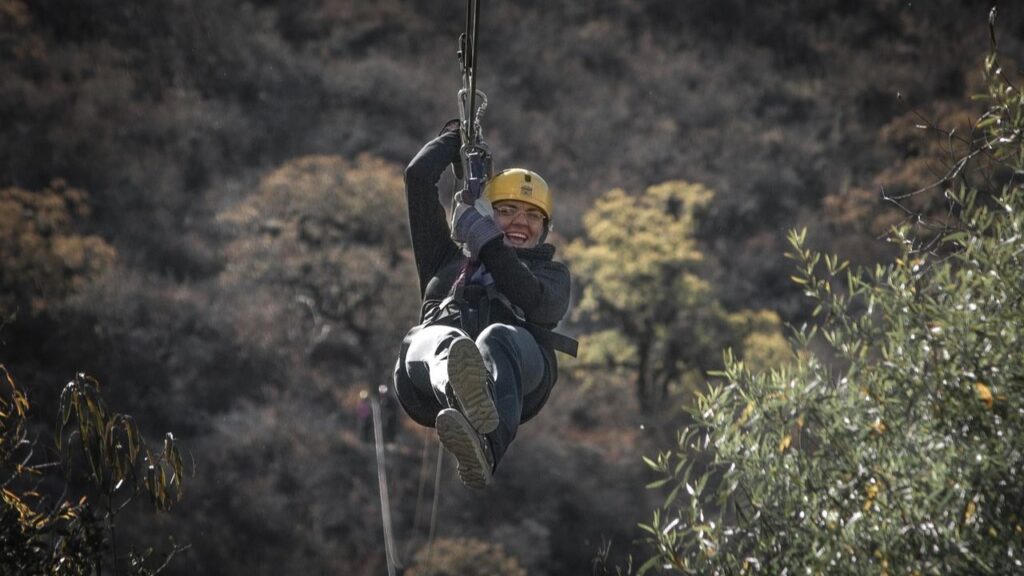
The Thrill for Teens and Adults
The zip-lining experience in Chiang Mai caters particularly well to teens and adults looking for an adrenaline rush. Gliding from platform to platform, participants can traverse the canopy of the rainforest, catching glimpses of the local flora and fauna from high above the ground. It’s an exciting way to connect with nature while satisfying the desire for adventure.
Safe with Professional Guidance
Safety is a top priority for zip-lining operators in Chiang Mai. Participants are equipped with harnesses, helmets, and gloves and are always accompanied by experienced guides. Before the adventure begins, everyone is given a thorough safety briefing, and professional guides demonstrate how to zip line correctly. They are also stationed at each platform to ensure everyone arrives and departs safely.
Essential Travel Tips for Families
- Check Weight and Age Restrictions: Most zip-lining companies have weight and age limits for the safety of all participants. Make sure to check these before booking.
- Dress Appropriately: Wear close-toed shoes and comfortable clothing that does not restrict movement. Long hair should be tied back, and loose jewelry should be avoided.
- Listen to Instructors: Pay close attention to the training session and follow all instructions given by the guides.
- Health Considerations: Ensure all participants are healthy and have no conditions the activity could aggravate.
- Pre-booking: It’s advisable to book your zip-lining trip in advance, as slots can fill up quickly, especially during peak tourist season.
- Climate Considerations: The weather can be quite hot and humid, so staying hydrated is important. If you’re sensitive to heat, book an early morning session.
- Use of Cameras: If you wish to take photographs, ensure a camera can be securely attached to your body or the equipment.
- Respect for Nature: While zip-lining is an eco-friendly activity, respecting the natural environment and not disturbing the wildlife is essential.
- Certified Operators: Always choose a certified zip-lining company with a good safety record.
- Best Time to Visit: The best time to go zip-lining in Chiang Mai is during the cooler months, from November to February.
Zip-lining in Chiang Mai offers a burst of adrenaline and a unique way to appreciate the natural beauty of Thailand. It’s an activity that allows families to create exciting memories while ensuring the safety and comfort of all participants.
In conclusion, Asia’s rich tapestry of outdoor family activities provides families with an unmatched array of experiences that combine adventure, culture, and natural beauty. Check our guides for Best Indoor Activities for All Ages in Asia.
Whether through the thrill of exploration, the joy of witnessing wildlife, or the satisfaction of contributing to conservation efforts, these activities offer ways to deepen family connections and foster a love for the great outdoors. Engaging in these top outdoor family activities in Asia is not just about having fun; it’s about building stories together that will be told for generations to come.


